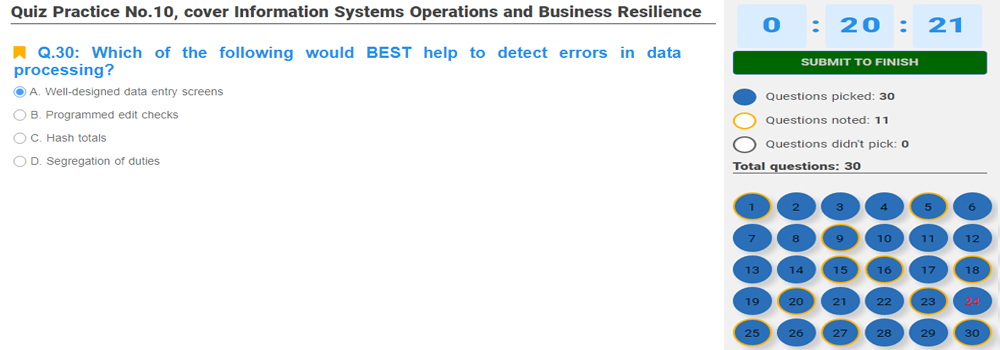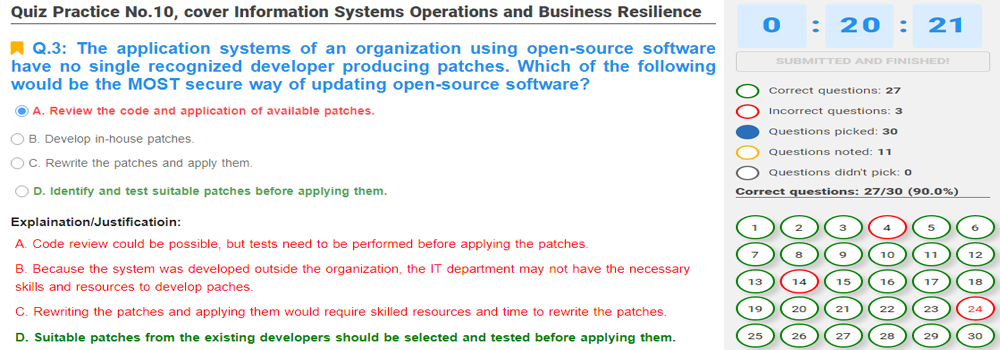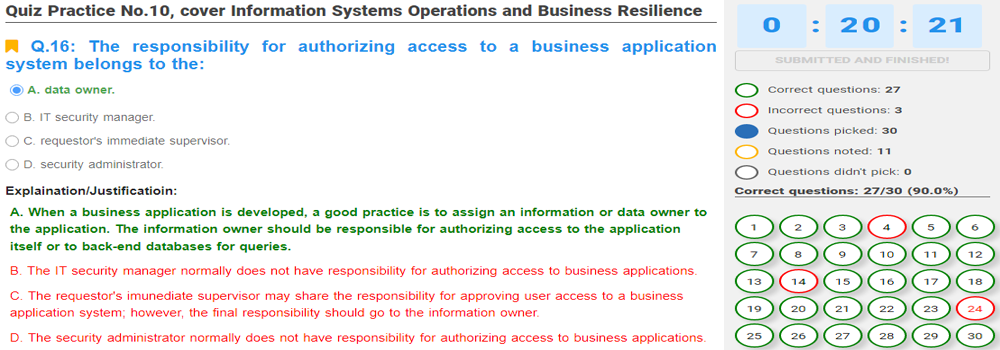SOME NOTES ABOUT ORACLE DATABASE SECURITY ADMINISTRATION:
Oracle Database Security Administration [1Z0-116] is an important and mandatory certification on your path to becoming an expert in your field.
To get this certificate, you need to firmly and confidently grasp the content listed below. Then, you need to pass the exam directly on ORACLE's system. This exam has a duration of 120 minutes, with 72 questions. You need to answer correctly at least 59% of the total questions on the exam.
Below are the contents that you need to grasp firmly and confidently before registering to take the exam on ORACLE's system:
1. Overview.
1.1. Assess security needs (risk reduction, regulatory compliance).
1.2. Assess the typical attack points for a database.
1.3. Deploy the Maximum Security Architecture.
2. Manage Database Users.
2.1. Administer OS Authentication.
2.2. Administer Kerberos Authentication.
2.3. Administer PKI Certificate Authentication.
2.4. Administer Enterprise User Security.
2.5. Administer Centrally Managed Users.
2.6. Identify Inactive accounts.
3. Manage and Secure passwords.
3.1. Secure Passwords in scripts and applications.
3.2. Change a user’s password securely.
3.3. Administer a secure external password store to secure passwords.
3.4. Administer the Database Password File.
3.5. Control the use of a password file.
4. Configure and Use Contexts.
4.1. Understand and use USERENV variables.
4.2. Understand and Use Client Identifiers.
4.3. Extend Unified Auditing with Context information.
4.4. Use context information with Secure Application Roles.
5. Manage Authorization.
5.1. Administer System and Object Privileges.
5.2. Assign Administrative Privileges.
5.3. Configure Secure Application Roles.
5.4. Configure Global Roles (EUS/CMU).
5.5. Perform Privilege Analysis.
6. Configure Fine Grained Access Control.
6.1. Configure Fine Grained Access Control (FGAC).
6.2. Configure FGAC with Real Application Security.
6.3. Configure FGAC withVirtual Private Database.
6.4. Configure FGAC with Oracle Label Security.
7. Configure and Manage Database Vault.
7.1. Describe the Default Separation of Duties with Database Vault.
7.2. Configure Database Vault Factors, Rules, and Rule Sets.
7.3. Configure Database Vault Mandatory and non-Mandatory Realms.
7.4. Configure Database Vault Command Rules.
7.5. Configure Realms, Command Rules, and Application Context to enforce trusted path access.
7.6. Perform Database Vault Operations Control.
8. Configure and Use Auditing.
8.1. Perform Privileged User Audit.
8.2. Configure Standard Audit.
8.3. Configure Fine Grained Auditing.
8.4. Configure and use Unified Audit.
9. Cofigure Network Security.
9.1. Assess the need for Network access control (ACL).
9.2. Manage Network ACLs in relation to microservice deployments.
9.3. Configure ACLs to access passwords in a wallet.
9.4. Configure Network Service Profiles.
9.5. Configure and use Listener Valid-Node Checking.
9.6. Enhance Database Communication Security with SEC_ parameters.
10. Configure and Implement Encryption.
10.1. Encrypt data in motion.
10.2. Configure Native Network Encryption.
10.3. Configure TLS Encryption.
10.4. Encrypt data at rest with Transparent Database Encryption.
10.5. Configure Column level and Tablespace level Encryption.
10.6. Encrypt the Data Dictionary.
10.7. Migrate unencrypted to encrypted data.
10.8. Manage Encryption Keys.
10.9. Administer and use the SYSKM Administrative Privilege.
10.10. Administer Encryption Wallets.
11. Implement Data Masking and Data Redaction.
11.1. Implement Data Redaction.
11.2. Implement Enterprise Manager Data Masking Pack.
11.3. Configure and use the Application Data Model.
11.4. Perform Sensitive Data Discovery.
11.5. Deploy Data Masking Formats.
11.6. Compare In-Database -vs- At-Source execution.
11.7. Automate Masking operations with EMCLI.
11.8. Configure Transparent Sensitive Data Protection (TSDP).
12. Invoke the Database Security Assessment Tool.
12.1. Run the Database Security Assessment Tool.
13. Patch Databases.
13.1. Assess the need for of a CVE.
13.2. Decode CVSS Risk Scoring.
14. Manage Database Security in the Cloud.
14.1. Asssess the Shared Responsibility Model.
14.2. Manage hybrid cloud scenarios.
14.3. Assess Autonomous Database Self Securing.
GOODLUCK TO YOU!!!




